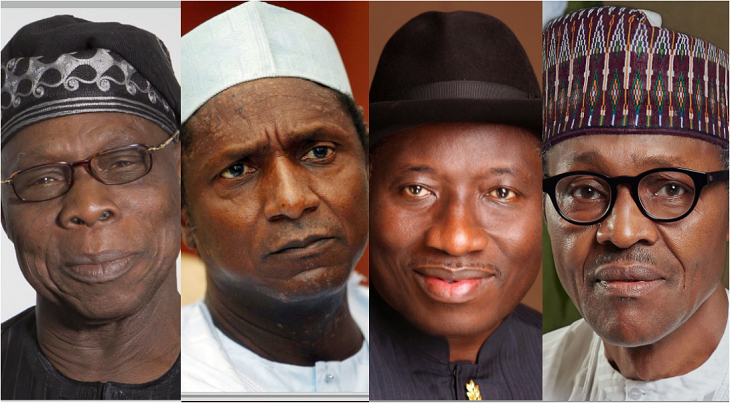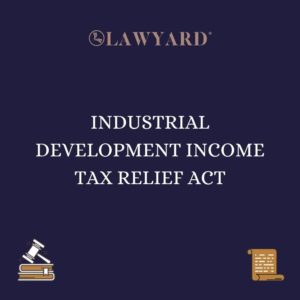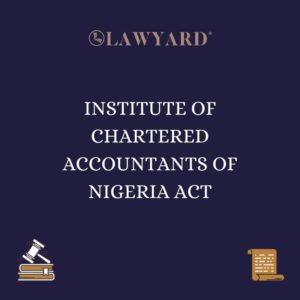ECONOMIC SCORECARD: How Nigerian Presidents Have Performed From 1999 to date

Lawyard is a legal media and services platform that provides…
Presidents’ past and present are often judged by how well the economy has performed during their tenure. For example, history is often kind to a president that presides over an economic boom compared to one that led to a period of economic crunch or turmoil.
As we approach another election year, the economy is front and burner of what Nigerians expect from all the presidential hopefuls on the ballot. Nigerians want to know how they create more jobs, grow the economy, stabilize the exchange rate, reduce inflation, improve government revenues, etc.
As we await what the future holds, it is also important to look back at where we are coming from. After all, as the saying goes, a country that fails to learn from the failures of history is bound to repeat it.
Thus, a look at the performance of past presidents since the fourth republic is imperative at this stage.
Since the return to democracy in 1999 Nigeria has had four presidents, three of which are from the People’s Democratic Party (PDP), while the last and incumbent president is from the All Progressives Congress (APC).
A breakdown of Nigeria’s past presidents from 1999 to date is given below:
Olusegun Obasanjo – 29th May 1999 to 29th May 2007 (PDP)
Umaru Musa Yar’Adua – 29th May 2007 to 5th May 2010 (PDP)
Goodluck Ebele Jonathan – 6th May 2010 to 29th May 2015 (PDP)
Muhammadu Buhari – 29th May 2015 to date (APC)
Below is a holistic view of how Nigeria faired under the past four administrations based on the *Inflation Rate* , *External Reserve* , *Non-oil export* , *Exchange Rate,* *GDP Growth Rate* , and *Public Debt Profile.*
*Inflation rate*
The rising inflation rate has been a major bane for the Nigerian economy for a very long time and has recently been a topical issue, given the fast rise in the prices of goods and services in the country and across the globe.
The latest report by the National Bureau of Statistics (NBS) revealed that Nigeria’s inflation rate quickened to 17.71% in May 2022 from 16.82% recorded in the previous month.
Similarly, food inflation rose from 18.37% to 19.5%, while core inflation rose to 14.9% in May 2022.
The uptick in inflationary pressure was attributed to the rising cost of food and energy, an after-effect of the Russia-Ukraine war.
From a historic point of view, Nigeria’s inflation has averaged 12.2% between May 1999 to date.
A look at the historical data reveals that the current administration of President Buhari between May 2019 to date recorded the highest average inflation rate with 14.56%, followed by Obasanjo’s second tenure between June 2003 to May 2007 with 13.65%.
Of the four presidents during this period, Nigeria recorded its highest average inflation rate of 13.98% under the current Muhammadu Buhari administration, closely followed by Obasanjo’s 8-year administration with an average inflation rate of 12.3%.
*External Reserves*
Nigeria’s external reserves are an accumulation of foreign exchange that is held on behalf of the government by the Central Bank. It is critical for the country to be able to pay for its imports, fund forex demands and to a large extent stabilize the exchange rate.
Thus, for Nigerian presidents past and present, being able to leave behind a sizeable external reserve is also considered a mark of success.
Nigeria achieved the highest external reserve at the end of September 2009 at $62 billion. This was during the Yaradua administration.
When he took over from President Obasanjo, he met an external reserve of $43.1 billion, and by the time he died on the 5th of May 2010, the external reserve was about $40.3 billion.
Goodluck Jonathan presided over a robust external reserve profile but left behind $28.5 billion in external reserves by the time he left in May 2015.
Nigeria’s external reserve ended in 2021 at about $40 billion under the Buhari administration. It is currently around $38 billion and is unlikely to cross $40 billion by the time he leaves.
*Exports*
Nigeria’s exports are divided into oil and non-oil exports. However, oil exports are the dominant portion of Nigeria’s export revenues. There is a paucity of data for the Obasanjo administration however, for this analysis we assume the export revenue as of 2008 is attributed to some of his work.
In 2008 Nigeria recorded total export earnings of $88 billion.
As of 2010, during the last year of late President Yaradua, export revenue was $80.5 billion.
President Jonathan, however, presided over the highest years of export revenue for Nigeria recording, $99.8 billion, $96.9 billion, and $97.8 billion in 2011, 2012, and 2013 respectively.
But by the time he left office, export earnings were a total of $34.7 billion (end of 2015 which we attribute to him). It was also $45.8 billion at the end of 2014.
As of December 2021, Nigeria’s export revenue is still languishing at $45.9 billion.
*Exchange rate*
Nigeria’s exchange rate has depreciated by 76.5% between 1999 to date against the US dollar, witnessing multiple devaluations at the official market, with even higher devaluations recorded in the unregulated markets.
Falling crude oil prices, surge in import demand, and drop in foreign inflows have exposed Nigeria’s balance of payments to recurrent deficits, leading to more pressure on the exchange rate. The fall in the oil price which began in late 2014 triggered a set of devaluation of the naira falling from N165/$1 to about N187/$1.
By 2016, the exchange rate experienced large volatility specifically falling to about N350/$1 and then N510/$1 before the apex bank introduced the Investor & Exporter window (IEFX), which helps stabilized the rate for the next two years.
Specifically, between 2017 and 2021, the official exchange rate hovered around the N360/$1 region.
Note that in addition to the IEFX window, the apex bank also offered high-interest rates to foreign portfolio investment (FPI) aimed to attract associated USD$ inflows. Trillions of naira were spent by the CBN to pay interest on controversial OMO bills that attracted up to $13.4 billion in FPI in 2019.
As of press time, the naira is trading at over N420/$1 at the Investors and Exporters window, while in the parallel market, it has crossed N610/$1, representing an exchange rate gap of N190/$1. The chart below shows the movement of Nigeria’s exchange rate from 199 to date.
*GDP Growth*
Nigeria is dubbed the giant of Africa and the largest economy on the African continent, with an estimated GDP of $432.29 billion (World Bank 2020). Meanwhile, looking at the NBS data, Nigeria’s real GDP has grown to N72.39 trillion in 2021 from N23.83 trillion recorded in 1998, representing a CAGR of 4.95% over the 23-year period.
A breakdown of the GDP performance across the six administrations since 1999, shows Obasanjo’s administration focused on telecommunication, with the introduction of telco giant MTN in the Nigerian market.
Musa Yar’Adua’s regime together with Goodluck Jonathan saw the manufacturing, and air transportation sectors record significant growth, while the current administration has prioritized the agricultural sector, albeit with marginal growth recorded.
A comparative analysis of the past presidents showed that the current administration has recorded the worst average GDP growth of 1.1% in the past seven years.
On the flip side, the short-lived Yar’Adua administration recorded the highest average annual real GDP growth rate of 7.13%, followed by Obasanjo’s regime with 6.99%, while Goodluck Jonathan recorded an average 6.1% annual growth rate.
It is worth noting that the current Buhari administration was marred by the 2016 global economic crisis and the 2020 covid-19 pandemic, which placed most economic activities across the globe on hold.
*Public debt profile*
Nigeria’s rising debt profile has been a major issue in recent years, with the government acquiring more loans to fund its budget deficit. Nigeria’s total public debt rose to $100 billion in Q1 2022, a naira equivalent of N41.6 trillion.
The rising debt is due to tepid growth in revenue as a result of the decline in crude oil prices, as well as the inability to improve oil production. Hence, Nigeria spends a huge chunk of its revenue on debt service.
According to data from Nairalytics, Nigeria spent 96% of its revenue to service debt in 2022, piling more pressure on Nigeria’s fiscal balance.
A look at the debt profile of past presidents of the country, the short regime of Musa Yar’Adua, which was later completed by Goodluck Jonathan between 2007 and 2011 recorded the highest annualized growth in debt profile as seen in the table below.
On the flip side, Olusegun Obasanjo’s administration saw Nigeria’s debt profile drop significantly, with a CAGR of 17.59% in its second tenure.
*NB* : The data compilation above is publicly available and sourced from the NBS and CBN. They are also the only data available that cut across all the leaders mentioned above.
Lawyard is a legal media and services platform that provides enlightenment and access to legal services to members of the public (individuals and businesses) while also availing lawyers of needed information on new trends and resources in various areas of practice.













